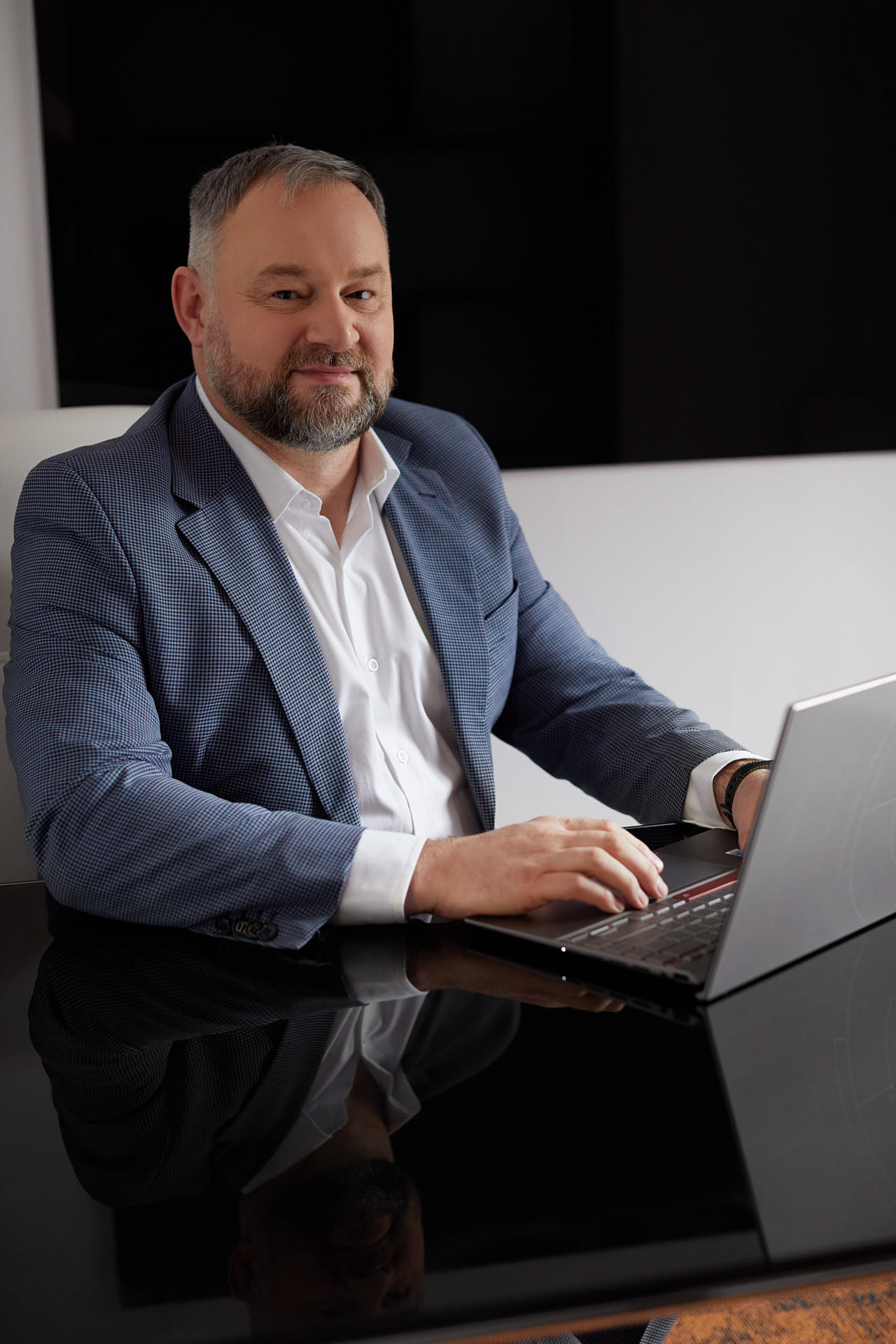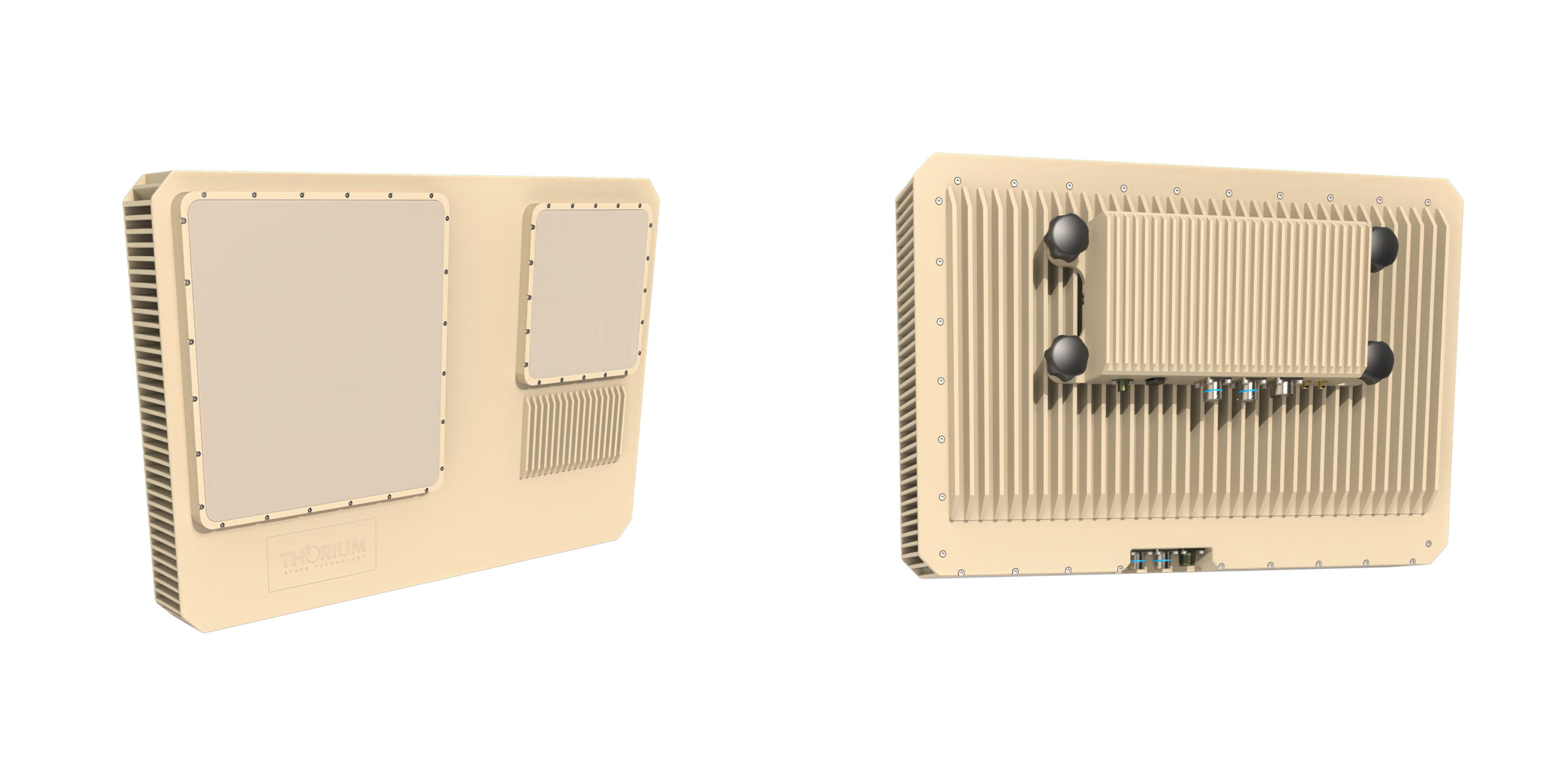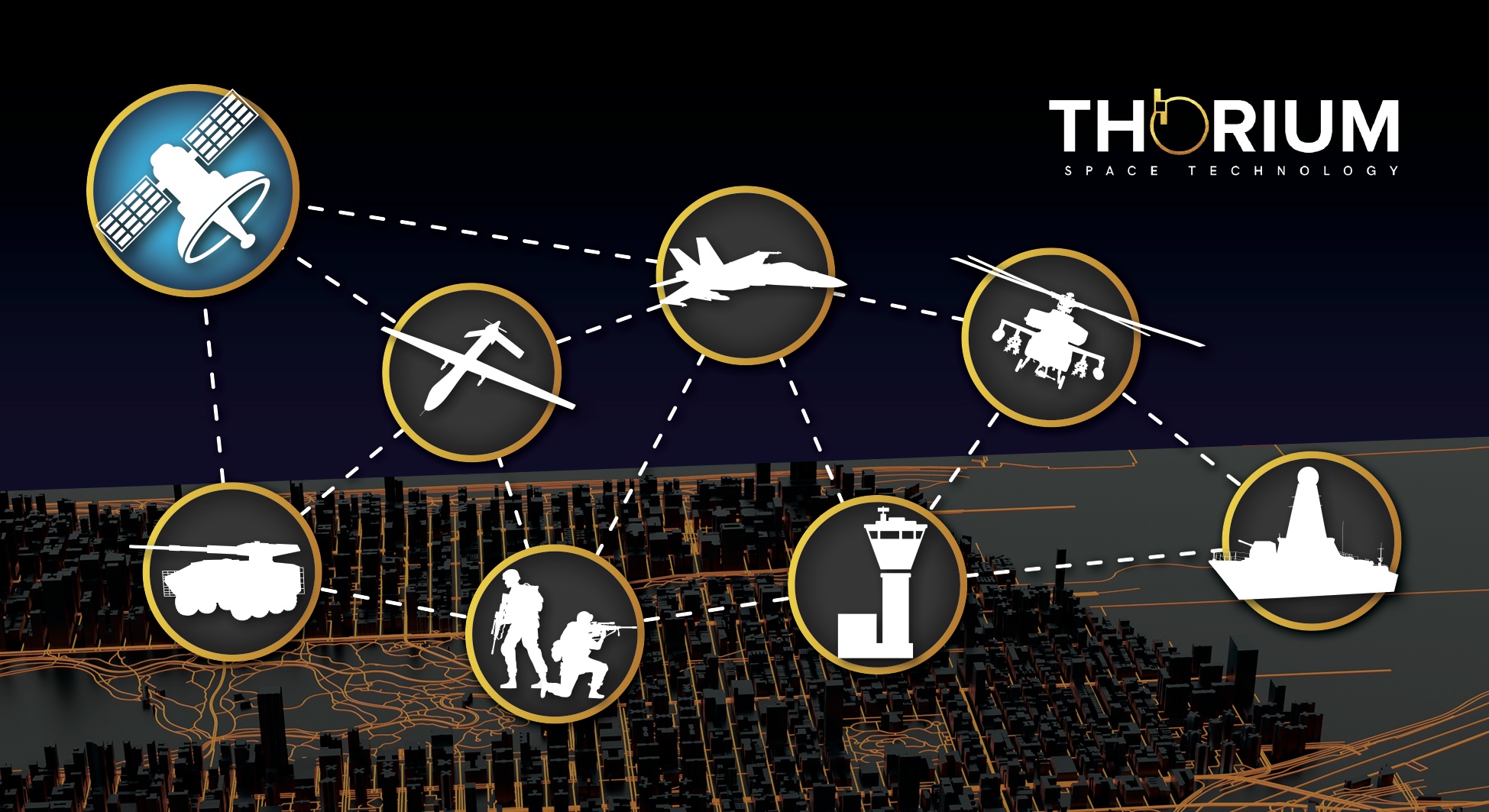Latest News

Pawel Rymaszewski, CEO and CTO of Thorium Space. Photo: Thorium Space
Thorium Space is fast becoming a flagship company in the Polish space market. The company has a diverse approach and its technology focuses on ground terminals and beam-forming payloads. Thorium Space is currently ramping up, and testing its antennas ahead of demonstrations ahead of commercial launch.
In this interview, Pawel Rymaszewski, CEO and CTO of Thorium Space talks to Via Satellite about the technology roadmap for the company, its commercial opportunities, and how the company hopes to make an impact in the European defense market.
VIA SATELLITE: Thorium Space is one of the new space companies emerging from Poland. Could you tell us about your overall vision for the company?
The idea of Thorium Space evolved into a space sector company 10 years ago. We built the brand step by step. It happened slowly, because at the beginning of our journey we were not able to realize our vision and plans as we wanted and how we planned it. While gaining professional experience during my work at one of the big operators, I observed what was happening in the market and in the industry at the time. I knew even then that a change was needed soon. However, a certain amount of flexibility was necessary, and the markets had to open to change. The main reason we chose Poland as the place for Thorium Space’s development is the accomplished staff — top-class specialists, mainly engineers. Time has proven that although the Polish space ecosystem is not huge, it has undoubtedly become an important element in the context of the European ecosystem. In perspective, I can confirm that this was a good decision.
VIA SATELLITE: The company seems to be moving into a few different areas from building antennas and building satellites. Could you explain why you are taking such a diverse approach? What do you think will be the main revenue generator?
Rymaszewski: We are experts in designing cutting-edge technological solutions for the construction of space vehicles and smart antenna arrays, with use in space and defense industries. We are targeting our solutions to industries where satellite communications play a key role. Our focus is on active antenna arrays. Electronically Steerable Antennas (ESA) are based on our technology. The same antennas and the same frequency ranges are used in different products. Let’s distinguish satellite communications on satellites, terminals on the ground, and then 5G.
Initially, we envisioned building a full satellite with a payload. However, after analyzing the situation, we decided that this was not the best idea, so we decided to find partners to provide the technology for buses, and we would focus only on payload. It’s worth mentioning that all the projects we are implementing provide the know-how and technology to build payloads. The second pillar of Thorium Space, generating the most revenue, is ground terminals using the same technologies, namely active terminals, and flat panel antennas. However different components are used in them, the know-how remains the same. We are focusing more on antenna technology. We also have a Small GEO satellite built in our plans, but this is a project where we will integrate our technology (active digital beam-forming payload) with platform co-developed with partners from EU.

Thorium Space AESA Terminal, Ka-band, multi-beam, and multi-orbit. Photo: Thorium Space
VIA SATELLITE: Let’s talk satellite antennas. You are launching a Ka-band antenna, targeting markets such as aviation, automotive, maritime and defense. When will this antenna will be deployed commercially?
Rymaszewski: We estimate that our antennas should be on the market by the end of this year. We are currently negotiating agreements with large operators, aiming to meet their expectations, and we are nearing the finalization of this stage. We are testing the equipment and will start conducting demos in the third quarter of this year. We are planning to hold an event for representatives of the Polish Ministry of National Defence, the military, and the space sector, as well as the media, to present our first flat panel terminal in Ka-band. The terminal will be ready by the end of the year, but we are also making one significant change. We are developing a new chipset for those terminals. Why? Because we bought the needed chipset for the terminals from an external supplier, which is OK, but our solution is much more integrated and at the same time with better performance and lower cost.
VIA SATELLITE: We know the market for antennas particularly in mobility is very competitive. Why do you think Thorium Space can make a real impact in the market?
Rymaszewski: There are several companies that want to provide this type of solution. Because I came from the satellite operator side, I followed the regulations, the ITU [International Telecommunications Union], the operators’ regulations, so I know that our antennas are a little more complex than competing antennas. They generate far fewer technical problems and perform much better than the competition. We also have another advantage — we make everything ourselves — in-house, including the chipsets. As a result, we can lower the price of the whole product and keep the best RF performance in terms of what can be done today. This is crucial. We use dual beams in both directions, so you can use two satellites, both up and down and even from different orbits. This is especially important in the EU when we are talking about government applications. Currently, our target is Europe. We know the competition, but we focus on Europe and our needs here. All our work has focused on getting as much performance as possible from an RF standpoint at a lower cost. Critical, however, is to lower power consumption. However, we have achieved that as well. We have optimized the product for the customer’s needs. We are aware that there is strong competition, but now there is also a need for a huge number of terminals, especially in Ka-band. There are not many companies in this market, so there is a big gap that we can fill in.
VIA SATELLITE: What is your technology roadmap? When do you hope to sign deals with your first commercial customers?
Rymaszewski: We are at the stage of contract negotiations. I hope to sign agreements with the first customers in the next three to six months. We are also targeting business in a new market for us, government and defense. This is something that has greatly accelerated activities relative to new targets on Thorium Space’s internal road map. At the beginning of our observations of terminals offered by other companies to government or defense customers, we thought we were “too small.” Finally, however, we found some gaps that we could fill with our technical solutions.
To summarize what is happening now — in addition to providing terminals for operators and several companies, we will also focus on slightly different terminals and a different market, using the same antenna, but slightly smaller. This is also Thorium Space’s response to the threats posed by the drones offered by manufacturers. In addition, we are focusing even more on active arrays especially in Ka-band, and a bit in Ku-band.
VIA SATELLITE: You spoke about different verticals for your antennas such as defense as well as commercial mobility. Do you expect to find greater success in the defense market?
Rymaszewski: The defense market is currently a driving force for us. And that force is strong. The situation is undoubtedly political, if only with the ongoing war in Ukraine, which has changed everything, or cyber threats. We are trying not only to provide terminal solutions for data, but also satellite communications modules that can be integrated into various systems. The much-needed critical technology must be developed in Europe. What is extremely important for us — It was the customers who found Thorium Space, not the other way around. This proves to us that our brand is recognized and valued. However, we are aware that the commercial terminal market is huge and there are many competitors from all over the world. It’s not easy, and there are big operators who have limited choices, so you must be in the loop. We view the government and defense market as the most important market. That’s what we’re focusing on right now. Even the chipset is mainly focused on government and defense applications. It’s secure and cyber-protected. All the developments in our technology are going in that direction.
VIA SATELLITE: When do you expect Thorium Space to be profitable? Will the company need further funding?
Rymaszewski: The goal is to reach profitability this year. We’re quite OK in terms of financing and the technology we need to develop. We are currently negotiating a round of financing with venture capital firms that will invest in our company and make it more stable. But it’s not just about investing money, it’s also about providing connections. We need “smart” money. We are negotiating with potential partners and will see what happens. The idea is that we will go to the public markets at some stage, but we don’t consider it a priority. We are trying to complete negotiations on contracts first. If everything goes as expected, we will end the year with some good contracts, and then we will think about what to do next.
VIA SATELLITE: Aside from the Ka-band antennas, are you looking to launch other technology/products over the next two years?
Rymaszewski: Yes, we have returned to the E-band, or W-band in NATO (70-90 GHz). This is the frequency that the company started working on in 2017. Two years ago, we stopped operations because there was no one in the market who could supply us with the necessary components. Now we have a partner who can make elements for us — beam-formers for this frequency range. We already know how to do it. We will try to make a small terminal/antenna available again for the E-band. If you look at satellite telecommunications, there is a 5 Gbps band for satellite use, which is slowly coming back for everyone, especially ESA. So, on our technological roadmap, E-band product development is on our list, and its advanced technology. As I mentioned earlier, we will demonstrate it this fall. These are extremely small antennas, the size of a postage stamp, but they provide huge data rates and are still electronically controlled. We want to develop this even though it’s a difficult task, but we at Thorium Space like challenges.

Photo: Thorium Space
VIA SATELLITE: What do you see as the opportunity for a Polish space company such as Thorium Space? Are the main opportunities for the company mainly in Europe or do you see a global play for the company?
Rymaszewski: We operate globally. There are two aspects to consider here. We are starting to look at Asia, as there has been a move to Ka-band satellites in the region. They will need these types of terminals. We would like to be a key player there. We know Europe is one part of this, but the market is evolving. We can be a provider of terminals in markets outside of Europe.
VIA SATELLITE: How would you describe the space environment in Poland? Do you think there is a great opportunity for space to have an impact in Poland?
Rymaszewski: I think that in the last two years the mentality has changed, and space is now accepted and perceived in completely different perspectives than before. It’s not just “science fiction” anymore. It is a business. It’s a big “wow” moment. The government now understands our needs. We are growing and have been accepted by big and major companies. Poland is no longer a place where only small components are produced. We can do much bigger things. Big companies like: Thales, Airbus, OHB, Boeing are now present in Poland, and Thorium Space is closely cooperating with them. We have a real ecosystem here now. It’s really a big change, even in the space of 12 months and recently, it has been announced that Poland will add to ESA budget 295m EURO plus and that will return with big ESA supported projects driving all Space ecosystem.
VIA SATELLITE: What do you hope to showcase at SATELLITE 2024 next year? What does the next chapter for Thorium Space look like?
Rymaszewski: At the next edition of SATELLITE which will be held in 2024, we would like to present terminals as well as other services that we are able to provide based on these antennas, such as communications for the government, for drones, for UAVs, etc. We intend to demonstrate the equipment and its capabilities. I hope we will be ready to show a mock-up of our satellite. We will show the results of what we have been working on for the last three years for a small GEO HTS project. It will be a fully digital system, with digital beam-forming payload in Ka-band. At SATELLITE, we also meet our European friends, but we want to show what we are capable of to the global market. I am strongly convinced that it is worth visiting our booth during SATELLITE 2024 and I warmly invite you to meetings and discussions right now.
Stay connected and get ahead with the leading source of industry intel!
Subscribe Now